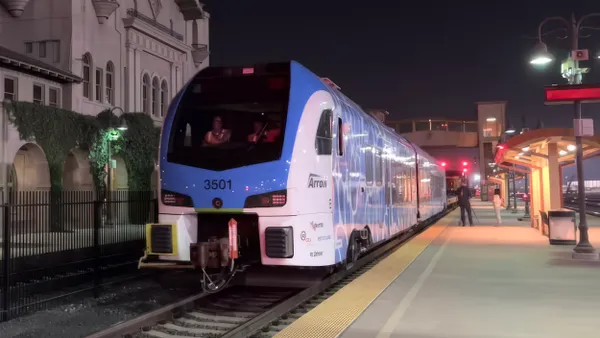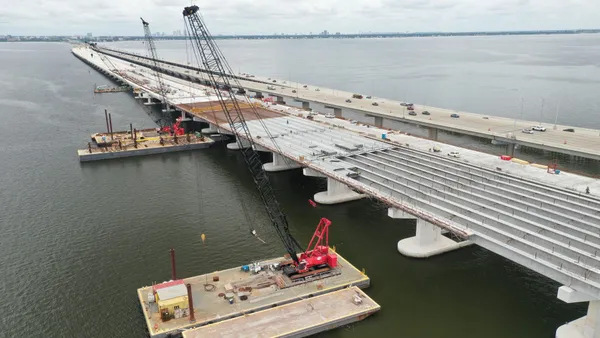Dive Brief:
- A TransitCenter report, Who's on Board 2019, surveyed transit riders to give insight into why transit ridership has been declining across the country over the past two years, and what agencies can do about it. The report draws conclusions based on focus groups and a survey of 1,700 transit riders in Chicago, Denver, Los Angeles, New Orleans, New York City, Pittsburgh and Seattle.
- The report centers on three main findings:
- Most riders aren't abandoning transit altogether, they're using it less.
- The privately-owned car is transit's main competitor, as survey respondents overwhelmingly reported replacing transit trips with personal car trips.
- Major personal life events — moving to a new home, relocating for work and getting a raise, for example — cause riders to shift their transit use more than average.
- The report puts passengers who decrease their transit use into two buckets: those who abandon transit altogether and those who cut back their use. The report says it's positive to note only 25% of the ridership decline is due to people completely abandoning transit, indicating the other riders have merely cut back their use and could be enticed to increase their transit trips again.
Dive Insight:
The report shows overall dips in transit ridership and that fewer riders use transit multiple times a week. Daily transit riders have dropped from 41% of respondents in 2016 to 32% now. However, occasional riders have increased from 29% in 2016 to 42% at present.
Ride-hailing service takes away from transit ridership, but not as much as personal cars, the report shows. In 2016, 43% of survey respondents had access to a car but that has grown notably to 54% now. Access to a car has nearly doubled among respondents who have decreased the amount of transit trips they take.
The most frequent transit users have modest annual household incomes — $25,000-$75,000 — and live in areas considered to have good transit service. The report pointed out a correlation between housing and transit. Housing costs are higher in transit-accessible neighborhoods than those with less access, and housing costs rise significantly wherever transit expands.
Outside factors affect ridership, but the report says a major factor that influences ridership is transit service quality. Reliability, frequency, cleanliness and transit stop facilities all are key to rider satisfaction and within transit agencies' power to improve. The report also suggests improving bus service with measures like more dedicated bus lanes, transit signal priority and all-door boarding.
Agencies can win over riders and boost consumer confidence by starting with relatively quick and inexpensive initiatives, including network redesigns and pilot bus lanes, the report says. "The only responsible course for public transit leaders is continuous, rider-focused service improvement and urban policy that ensures equitable, quality transit access."
Reforming transit is proven to grow ridership and cities with strong transit have more frequent riders who are more likely to maintain their levels of ridership, the report says. New York and Chicago are cited as examples of cities that have better quality transit and less loss of riders than other cities such as Seattle or New Orleans.
The report explains that although public transit as a concept, and the recent ridership drops, often are referred to as a nationwide issue, transit ridership actually is a local issue. Ridership in different regions is affected by different factors and should be addressed individually.











